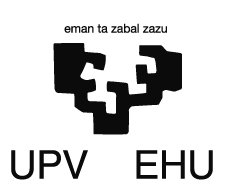Hizlari-bektore manipulazioaren bidezko genero-anbiguoko hizketaren sintesia euskaraz
##plugins.themes.bootstrap3.article.main##
##plugins.themes.bootstrap3.article.sidebar##
Laburpena
Gero eta interes handiagoa dago genero-anbiguko ahotsa duten text-to-speech (TTS) sistemetan, besteak beste, laguntzaile birtualetan eta bozgorailu adimendunetan genero-alborapenak eta estereotipoak saihesteko duten ahalmenagatik. Artikulu honetan, ahots-bihurketa teknika berriak aplikatzen dizkiegu ahots-bektoreei sare neuronaletan oinarritutako genero-anbiguoko euskarazko TTS sistemak lortzeko. Hizlari-bektoreak hiztun anitzeko Tacotron 2-a entrenatuz lortzen dira. Hizlari-bektoreen normalizazioa eta eskala parametro bat erabiltzen duten eta erabiltzen ez duten sistemak konparatu ditugu, baita sistema hauetan ahots sintetiko arruntek eta transformatuek lortzen duten kalitatea ere. Emaitzek frogatzen dute aurkeztutako metodoak genero-anbiguoko ahotsak lortzeko baliozkoak direla kalitate onargarriak lortuz.


